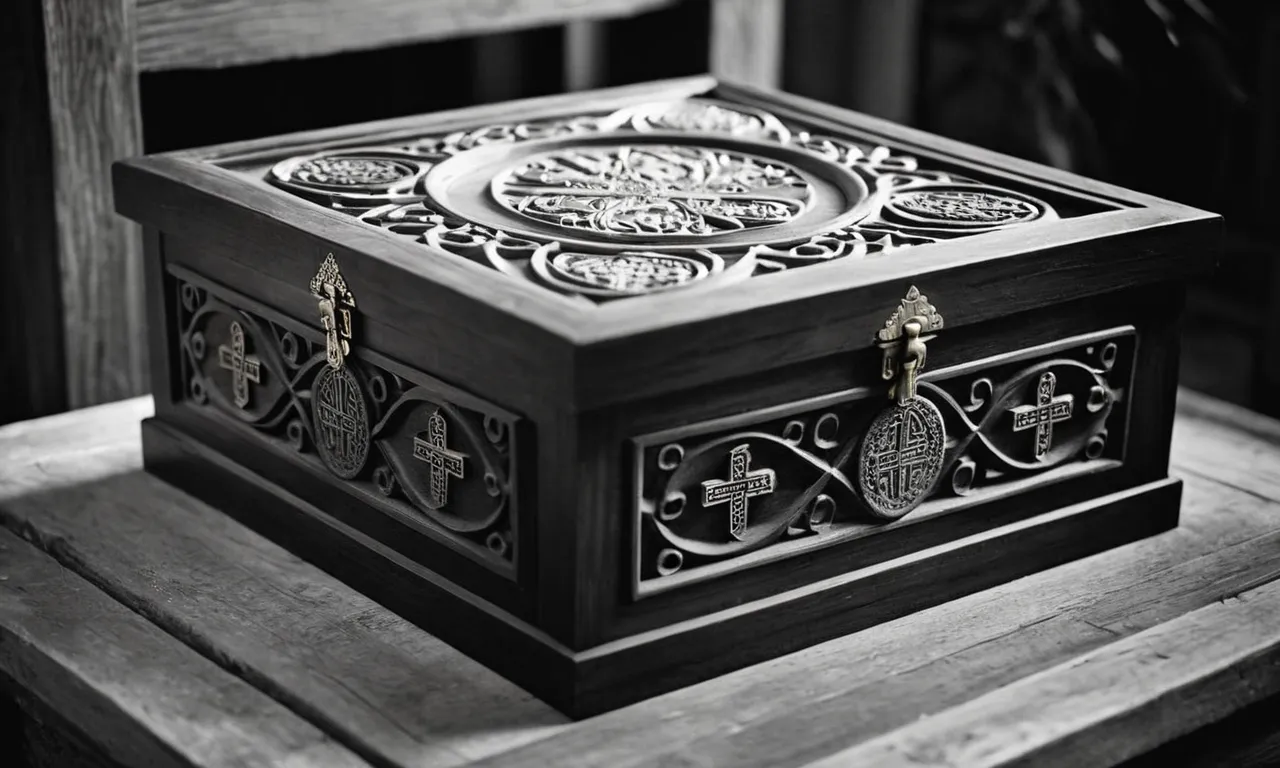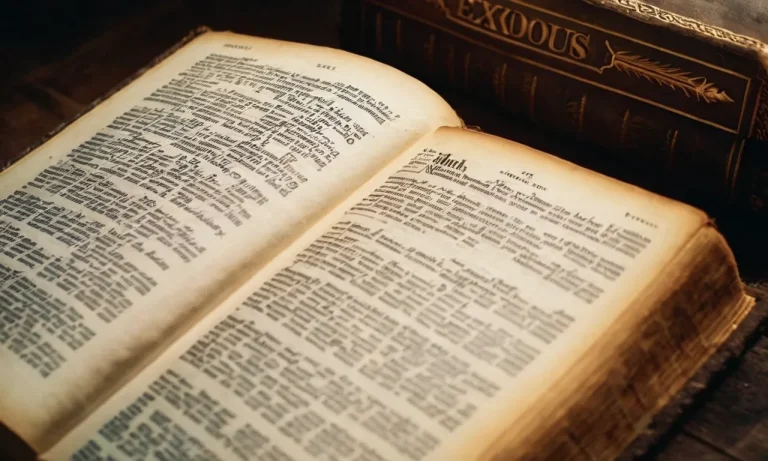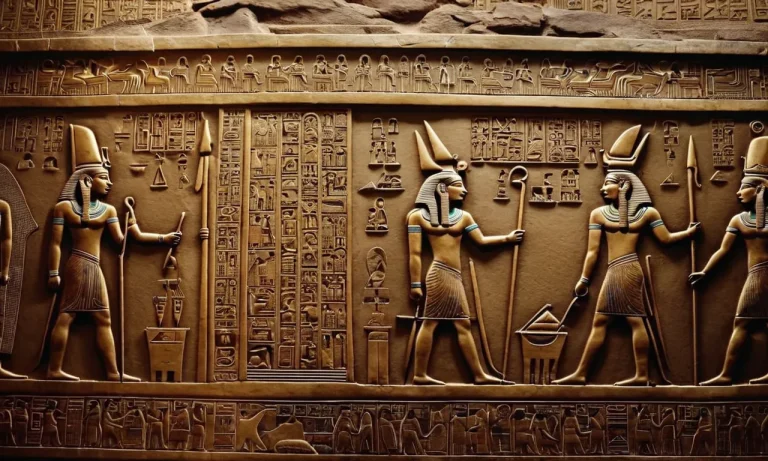What Is A God Box? A Complete Explanation
Have you ever heard the term ‘god box’ and wondered what exactly it refers to? If so, you’ve come to the right place. In this comprehensive guide, we will delve into everything you need to know about god boxes – from what they are, to their origins, common uses, and even how to make your own.
If you’re short on time, here’s a quick answer: A god box is a place where people store written prayers, wishes, or petitions to their god or higher power, believing that a supreme being or entity will receive, consider, and respond to what is placed inside.
We will examine the history and meaning behind god boxes, the different ways they are used in various spiritual traditions and religions, the symbolic purpose they serve, as well as tips for making your own god box to connect with the divine.
Let’s get started uncovering the mysteries of this intriguing spiritual tool.
What Exactly Is a God Box?
A God box, also known as a prayer box, is a spiritual tool used to deepen one’s connection with God or a higher power. It typically consists of a small box or container that a person uses as a repository for written prayers, petitions, or affirmations addressed to the Divine.
The practice of using a God box has its origins in Catholic tradition but has become popular across different faiths and spiritual backgrounds. Here is a more in-depth explanation of what a God box is and how it works:
The Purpose of a God Box
The main purpose of a God box is to serve as a physical place to release one’s intentions, worries, desires, and requests to a higher power. Writing down a prayer or intention and placing it in the box is a symbolic act of letting go and allowing divine wisdom to handle the concern.
It allows people to relinquish control over situations they cannot change and put their trust in God/the universe. This act of surrender is meant to ease anxiety, foster acceptance, and promote alignment with divine will.
The God box essentially becomes a vessel into which people can pour their most heartfelt prayers.
How to Use a God Box
Using a God box involves following a simple ritual:
- Find a small container or box that will serve as your God box. This could be a jewelry box, keepsake box, small tin, or other vessel that resonates with you.
- Write down your sincere prayers, wishes, or intentions on small pieces of paper.
- Review your prayer, speak it aloud if desired, and visualize the outcome you seek.
- Place the paper prayer in your God box and pause for a moment to release the concern fully.
- Let the prayer rest in the box, trusting that the divine has heard your petition.
- Write down additional prayers as needed and repeat the process.
People often keep their God box in a special place in their home and revisit it whenever they feel called to offer up additional prayers. The prayers remain in the box to signify giving the desires over to divine care.
Origins and Significance
The God box concept originated with Catholic nuns who would write down their prayers and petitions and place them in a communal box to be lifted up in shared prayer. Over time, this evolved into a spiritual practice that anyone could use at home.
The ritual offers a tangible way to practice surrender and cultivate faith. It provides comfort knowing one’s heartfelt desires have been expressed while also releasing attachment to specific outcomes.
The practice reminds people they are not alone in their struggles and that a higher power is always available as a source of strength, guidance, and support.
Today, God boxes remain popular across many faith traditions, including Christianity, Judaism, Islam, Buddhism, and more. The unifying theme across these varied practices is accessing the power of intentional prayer and conscious surrender to the divine.
Whether elaborate or simple, these special boxes serve as ever-present reminders that we are not alone in navigating life’s challenges. By releasing our tight grip and appealing to a higher wisdom, we open ourselves to new possibilities and solutions.
For many believers, the humble God box continues to provide an accessible outlet for devotion and an instrument for managing attachment.
The Origins and History of God Boxes
God boxes, also known as prayer boxes, have an extensive history spanning several cultures and faiths. Though the exact origins are unclear, similar practices of writing down prayers or petitions on paper and placing them in a designated container have been documented across the world.
Early Examples and Influences
Some of the earliest known examples come from the Catholic and Orthodox Christian traditions. In the Middle Ages, European churches would often have petition boxes where parishioners could leave written prayers which would later be offered up during services.
Additionally, the biblical story of the Jews placing prayer requests inside the Western Wall in Jerusalem established the concept of a sacred place to deposit written supplications.
Over in Asia, the practice of tying ribbons with prayers written on paper strips at Shinto shrines likely inspired the development of prayer boxes in Japan. These wooden prayer boxes, called mikuji-bako, allowed people’s petitions to be spiritually housed near places of worship.
Originating as early as the late 1800s, they share many similarities with modern-day God boxes.
Recent Revival and Reimagining
While petition boxes and related practices have occurred for centuries, the specific term “God box” emerged more recently. In the 1990s, writer Carolyn Manning authored a series of devotionals centered around a decorative box used for collecting prayer requests.
Her popular God Box books led to the current branding of prayer boxes as “God boxes” in modern vernacular.
Since then, the practice of using God boxes has expanded across denominations and into the larger spiritual community. They have been reimagined as a tool not just for formal religious practices but for anyone who wants to consciously relinquish their worries by giving them over to God/the universe/a higher power.
The boxes themselves have evolved to include a range of styles such as handcrafted wooden boxes, jars, jewelry trinket boxes, and more. Their resurgence speaks to an innate human desire to tangibly release our burdens.
God Boxes in Different Faiths and Spiritual Traditions
God boxes, also known as prayer boxes, are used in various faiths and spiritual traditions as a way to communicate with the divine. Here is an overview of how god boxes are utilized across different religions and spiritual practices:
Christianity
In Christianity, prayer boxes are sometimes called “worry boxes” or “lay it at the cross boxes.” People write down their worries, fears, or prayer requests on a piece of paper and place it inside the box as a symbolic act of giving their concerns over to God.
This practice allows Christians to let go of perceived burdens and trust that God hears their prayers. Some keep the box on an altar or desk as a visual reminder to pray about the contents. The act can bring feelings of peace and encouragement.
Judaism
In Judaism, some people place written prayers or petitions meant for God into cracks or crevices of the Western Wall in Jerusalem. Many feel deep spiritual connection at this site. The notes contain prayers and heartfelt requests.
Placing the written prayers among the ancient stones of the holy site represents connecting one’s prayers to those of centuries of Jewish faithful. This act symbolizes faith that God ultimately receives all prayers placed here.
Hinduism
Hindus sometimes use prayer boxes with murtis, the sacred statues or images of Hindu gods and goddesses. Devotees write down a prayer or request on paper and place it at the feet of the murti.
This practice demonstrates faith that the deity represented in the murti hears prayers placed before them. Some may return to collect the paper after believing their prayers have been received.
Buddhism
In Buddhism, prayer boxes are sometimes called “intention boxes.” Buddhists may use them to let go of desires or intentions with faith that putting them before Buddhas or enlightened beings will allow the hopes to manifest.
The box is seen as imbued with the power to actualize the prayers stored within it, according to the owner’s faith. Releasing one’s intentions into the box represents letting go of clinging or attachment.
New Age and Eclectic Spiritual Practices
God boxes are also widely used by those who consider themselves “spiritual but not religious” and followers of New Age or eclectic spiritual practices. Hopes and prayers are written down and stored in boxes on home altars.
This act represents releasing the prayer to the Universe or a Divine force or allowing energy to gather around the intention. Various objects, like crystals or sacred imagery, may be placed in the box alongside the written petitions.
The Symbolic Significance and Purpose of God Boxes
God boxes, also known as prayer boxes, are small boxes used to enhance one’s spiritual practice. They hold deep symbolic meaning and serve an important purpose for those who use them. Here is an overview of the significance and purpose behind these unique spiritual tools.
Symbolic Meaning
A god box represents an intention to let go and let God (or a higher power). By writing down a prayer or intention and placing it in the box, one symbolically releases the attachment to the outcome. This act requires faith and surrender, allowing the divine to handle the situation with its higher wisdom.
The box itself epitomizes the containment of prayers and the safeguarding of intentions. Just as the box holds the written prayers, God encompasses them with divine love and attention. The prayers are not forgotten or disregarded but are held safely as they are processed in God’s time.
Spiritual Purpose
God boxes serve several spiritual purposes:
- Foster letting go and relinquishing control
- Provide a ritualistic vessel for prayers and intentions
- Promote faith in divine timing and intervention
- Allow peaceful release of worries, fears or desires
- Develop patience for manifestations and realizations
Rather than clinging to outcomes or obsessively following up, those who use god boxes purposefully shift their attachments and expectations to the divine. This allows miracles to unfold naturally.
Everyday Use
God boxes can be used in many ways in everyday life. Here are some examples:
- Write down a prayer request for healing
- Place a note with the name of a loved one needing assistance
- Write and insert a heartfelt intention or desire
- Express gratitude for blessings already received
- Prayers for peaceful resolution of conflicts
The key is to trust wholeheartedly that placing one’s prayers in this special vessel will lead to the highest and best outcomes in perfect timing. Then miraculous resolutions can unfold.
God boxes help spiritual seekers develop faith and patience with the divine. By releasing control and trusting in a higher power to respond appropriately, we invite grace and answers to prayers in accordance with our soul paths.
How to Make Your Own God Box
A God box, also known as a prayer box, is a wonderful tool to help focus your prayers and connect more deeply with God. Making your own God box is easy and can be a meaningful spiritual practice.
Gather Your Materials
You will need:
- A box or container with a lid
- Paper and pens or pencils
- Decorative items (optional)
Any small box or container will work, like a jewelry box, keepsake box, or even an Altoids tin. You may want to decorate it with fabric, stickers, ribbons, images that have spiritual meaning for you, or leave it plain.
Write Down Your Prayers and Intentions
Writing down your prayers, worries, hopes, dreams, or anything else you would like to pray about is key. This focuses your intentions and reminds you what to pray for when you open your God box. You can write as much or as little as you want.
Some things you may want to write down on slips of paper to add to your God box include:
- Prayers for healing – physical, emotional, spiritual
- Prayers about life changes or difficulties
- Hopes and dreams
- People and relationships
- World events or leaders
- Gratitude and blessings
Write each prayer or intention on a small piece of paper to place in your God box.
Place the Prayers in Your God Box
As you write each prayer or intention, mindfully place it in your God box. Think about the meaning behind each one as you let it go and trust God with it. This act of surrender and faith is powerful.
Letting go of control and allowing a higher power to handle what is out of your hands brings peace and takes the weight off your shoulders.
Open and Pray Over Your God Box Regularly
Set a reminder to open your God box and pray over the contents inside several times a week or whenever you think of it. As you take each piece of paper out, offer up the prayer written on it again to God.
Notice if God has already answered any of the prayers and offer up gratitude. Refresh some of the prayers if they are still relevant or toss away any that are no longer needed. Writing down the date can help you track this.
Adding new prayers as often as you need is also very beneficial. Let this be an ongoing spiritual practice rather than a one-time act.
Entrusting your deepest heartfelt concerns to your God box helps develop your faith and connection with the divine. It also reduces worry and anxiety when you release the outcome to God. This simple spiritual ritual can have profound effects on your peace of mind and closeness with God.
Conclusion
God boxes serve as a symbolic conduit between human beings and the divine, facilitating spiritual connection through the simple act of placing a heartfelt request inside. Though the exact origins are uncertain, their comforting presence can be found across faiths, cultures, and traditions worldwide.
We all experience moments when we can use a little divine intervention – and entrusting our hopes to something greater than ourselves, via a god box, can bring purpose and peace of mind amid life’s chaos.
Whatever personal meaning you assign it, a god box remains a powerful focal point for prayer, manifestation and recognizing the sacred in the everyday.








